Blue flowers have long been associated with a sense of tranquility, calmness, and serenity. They are often used in gardens, bouquets, and floral arrangements to add a touch of elegance and sophistication. But beyond their aesthetic appeal, blue flowers also hold deep symbolic meanings that have been passed down through generations. In this article with Impeccable Nest, we will explore the various meanings and uses of blue flowers, as well as provide some advice on incorporating them into your life.
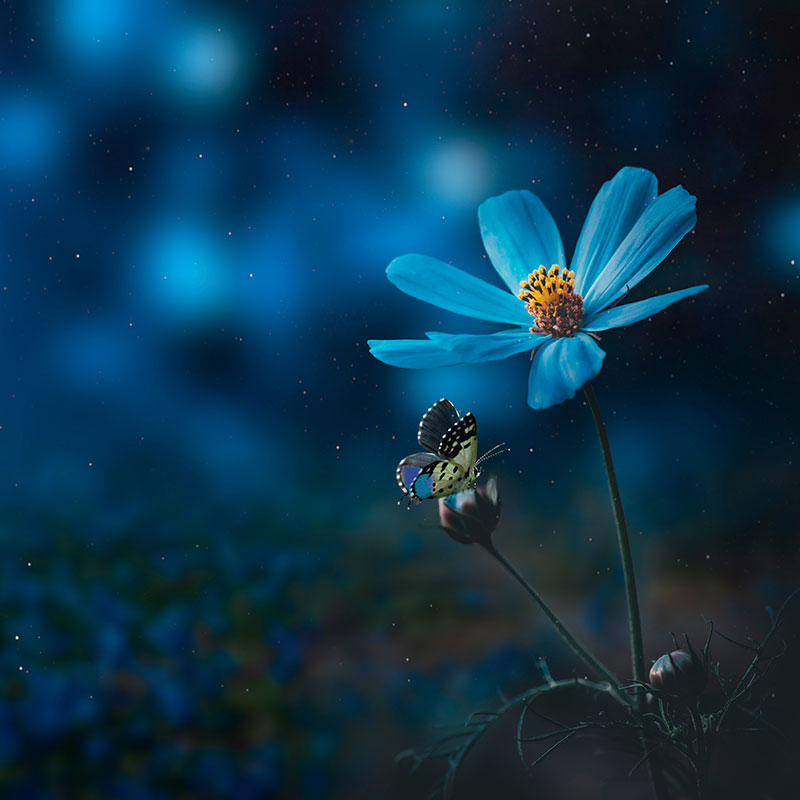
Blue Flower Meaning: Spiritual
The spiritual meaning of blue flowers stems from the color blue’s association with things beyond the physical world. Blue has long been connected to the metaphysical and divine.
Connection to Heaven
Many religions and belief systems link the color blue to heaven. Christianity, Judaism, Hinduism, and Islam all connect blue to the heavens and seeing the divine. Blue sky, blue water, and blue flowers represent the beauty and mystery of the spiritual plane.
Calm and Tranquility
Blue is strongly tied to calm, relaxation, and tranquility. Blue flowers evoke the sense of slowing down, taking a deep breath, and feeling centered. They remind us to find stillness and connect to our spiritual core.
Hope and Possibility
The expansiveness of blue represents possibility and promise. Blue flowers symbolize hope for the future and belief in realizing our dreams. The boundlessness of blue reminds us that life holds infinite potential.
Blue Flower Meaning: Emotional
Blue flowers also carry meanings related to emotions. They help convey feelings of trust, confidence, stability, and wisdom through their cool, soothing color.
Loyalty
The unwavering consistency of blue represents loyalty. Blue flowers signify being faithful and reliable in relationships. Popular for bridesmaids’ bouquets, blue blooms are perfect for showing longstanding trust.
Confidence and Self-Assurance
Blue radiates confidence. Blue flowers represent boldness, purpose, and focus because blue is the color of clear communication. Blue blooms give a sense of certainty and self-assurance.
Wisdom
Linked to intelligence and expanded perspective, blue flowers represent wisdom that comes from experience. The maturity of blue speaks of good judgment, insightfulness, and clarity of thought.
Top 7 Common Blue Flowers and Their Meanings
Here are some of the most popular blue flowers and the meanings associated with them:
Iris
The blue iris flower holds a significant meaning in many cultures and has been used for centuries to symbolize various emotions and qualities. The word “iris” comes from the Greek word for rainbow, which is fitting as the flower itself comes in a variety of colors, including blue.
One of the most common meanings associated with the blue iris is wisdom. This can be seen in Greek mythology, where the goddess Iris was known as the messenger of the gods and was often depicted with a rainbow. In this context, the blue iris represents knowledge, insight, and understanding. It is also believed that the blue color of the flower is a reflection of the sky, which is often associated with the vastness of the universe and the infinite wisdom it holds.
In addition to wisdom, the blue iris is also associated with hope. This can be seen in its delicate petals, which open up to reveal a bright yellow center. This symbolizes the idea of new beginnings and the promise of a better future. The blue color of the flower also represents calmness and tranquility, which can bring a sense of hope and peace to those who receive or give the flower.
Another important meaning of the blue iris is cherished friendship. This is because the flower is often given as a gift to express gratitude and appreciation for a special friend. The blue iris is said to represent the strong bond between friends, as well as the loyalty and trust that exists within a true friendship. It is a beautiful way to show someone how much they mean to you and how grateful you are to have them in your life.
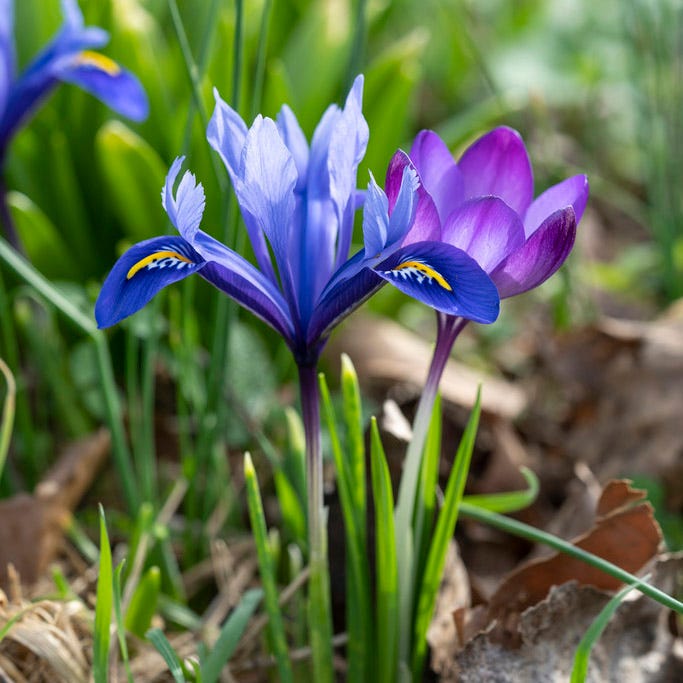
The blue iris is also associated with faith and valor. In ancient times, the flower was often used in ceremonies to honor and celebrate brave warriors. Its deep blue color was seen as a symbol of courage, strength, and determination. This meaning is still relevant today, as the blue iris is often given to someone going through a difficult time or facing a challenge, to remind them to stay strong and have faith in themselves.
Lastly, the blue iris is also linked to wisdom. This can be seen in its scientific name, Iris germanica, which comes from the Greek word “geranos,” meaning crane. The long, slender petals of the flower resemble the neck of a crane, which was believed to have exceptional eyesight and wisdom. In this context, the blue iris represents the idea of seeing beyond what is visible and having a deeper understanding of the world around us.
The blue iris holds a rich and diverse range of meanings, including wisdom, hope, cherished friendship, faith, valor, and wisdom. Its vibrant blue color and delicate appearance make it a popular choice for gifts and decorations, but it is the symbolism behind the flower that truly makes it special. Whether given as a token of appreciation or used to represent important qualities, the blue iris is a beautiful and meaningful flower that will continue to hold significance for many years to come.
Hydrangea
Blue flowers have long been associated with a variety of meanings, ranging from tranquility and calmness to sadness and melancholy. However, when it comes to the blue hydrangea, the symbolism is quite different. This beautiful flower is often seen as a symbol of gratitude and heartfelt emotions, but it can also represent frigidity and heartlessness.
On one hand, the blue hydrangea is commonly associated with feelings of gratitude and appreciation. This is due to its vibrant blue color, which is often seen as a representation of sincerity and thankfulness. In fact, in some cultures, giving someone a bouquet of blue hydrangeas is seen as a way to express your deep appreciation for them. This could be for a kind gesture, a thoughtful act, or simply for being a part of your life.
Furthermore, the blue hydrangea is also seen as a symbol of heartfelt emotions. Its delicate petals and soft, pastel hue evoke a sense of tenderness and vulnerability. This makes it a popular choice for weddings and other romantic occasions, as it represents the depth of love and affection between two people.
However, on the other hand, the blue hydrangea can also carry a negative connotation. In some cultures, the color blue is associated with coldness and indifference. This can translate into the meaning of the blue hydrangea as a symbol of frigidity and heartlessness. It may be given as a gift to someone who has hurt or betrayed you, as a way to express your feelings of disappointment and detachment towards them.

In addition, the blue hydrangea can also represent a lack of understanding or empathy. Its cool, blue color can be seen as a reflection of a person’s emotional state, where they are unable to connect with others on a deeper level. This interpretation is often seen in literature and art, where the blue hydrangea is used to depict characters who are emotionally distant or disconnected.
The blue hydrangea holds a complex and multifaceted meaning. On one hand, it symbolizes gratitude and heartfelt emotions, while on the other hand, it can represent frigidity and heartlessness. Ultimately, the meaning of this flower may vary depending on the cultural context and personal experiences of the giver and receiver.
Morning Glory
The blue flower, specifically the morning glory, holds a significant meaning in various cultures and traditions. Its vibrant blue color and delicate appearance have captured the hearts of many, making it a popular choice for gardens and floral arrangements. However, beyond its aesthetic appeal, the blue morning glory also carries a deeper symbolism that has been passed down through generations.
One of the most common meanings associated with the blue morning glory is unrequited love. This can be seen in different cultures, including Japanese, Chinese, and Native American. In Japan, the morning glory is known as “asagao,” which translates to “morning face.” This name was given because the flower blooms in the morning and withers by the afternoon, symbolizing the fleeting nature of love. In Chinese culture, the morning glory is often used to represent a lover’s longing for their beloved, as the flower’s vines twist and turn, reaching out for support and affection. Similarly, Native Americans see the morning glory as a symbol of unfulfilled love, with the flower’s short lifespan representing the briefness of human life and the inevitability of death.
Another significant meaning associated with the blue morning glory is mortality. The flower’s short lifespan, coupled with its delicate appearance, has led to its association with the fragility of life. In some cultures, the morning glory is believed to have healing properties and is used in traditional medicine to treat ailments related to aging and mortality. Additionally, the flower’s ability to bloom and thrive in harsh conditions, such as poor soil and extreme weather, is seen as a reminder of the resilience and strength needed to overcome the challenges of life.
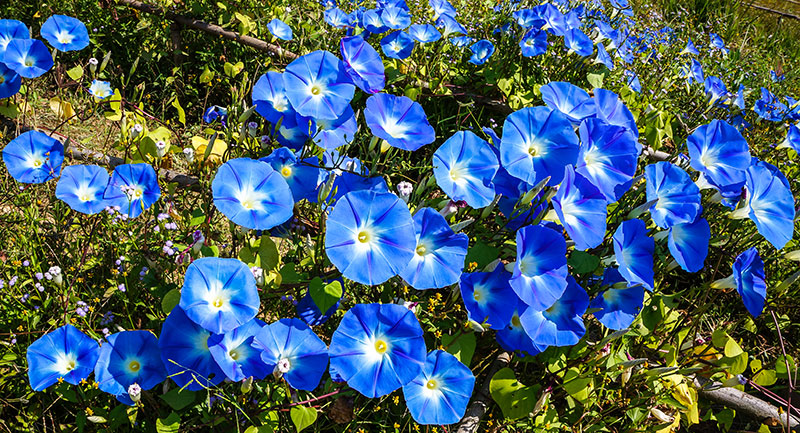
In addition to these two main meanings, the blue morning glory also holds other symbolic interpretations. In Victorian times, the flower was often used to convey a message of love and affection, particularly in secret or forbidden relationships. It was also seen as a symbol of perseverance and determination, as the morning glory’s vines can grow and climb to great heights despite facing obstacles.
The blue morning glory holds a rich and diverse symbolism that has been shaped by various cultures and traditions. Its representation of unrequited love and mortality serves as a reminder of the fleeting nature of life and the importance of cherishing our loved ones while we can. Whether used in gardens or given as a gift, the blue morning glory continues to captivate and inspire people with its beauty and meaningful symbolism.
Bluebell
Blue flowers have always been a symbol of beauty, tranquility and serenity. They are often associated with feelings of calmness, peace and relaxation. Among the many blue flowers, the Bluebell stands out as one of the most popular and beloved ones. This beautiful flower has a rich history and carries a deep meaning that has been passed down through generations.
The Bluebell is a delicate, bell-shaped flower that grows in clusters on long stems. It is native to Europe and is also known as the “harebell” due to its resemblance to a hare’s bell. The color of this flower ranges from a pale, almost white blue to a deep, vibrant blue. Its unique shape and color make it a favorite among gardeners and florists alike.
One of the main meanings associated with the Bluebell is gratitude. This flower is often given as a gift to express appreciation and thankfulness towards someone. Its blue color is said to represent sincerity and loyalty, making it a perfect way to show gratitude to a loved one or a friend. In Victorian times, giving someone a bouquet of Bluebells was seen as a way to convey your gratefulness for their presence in your life.
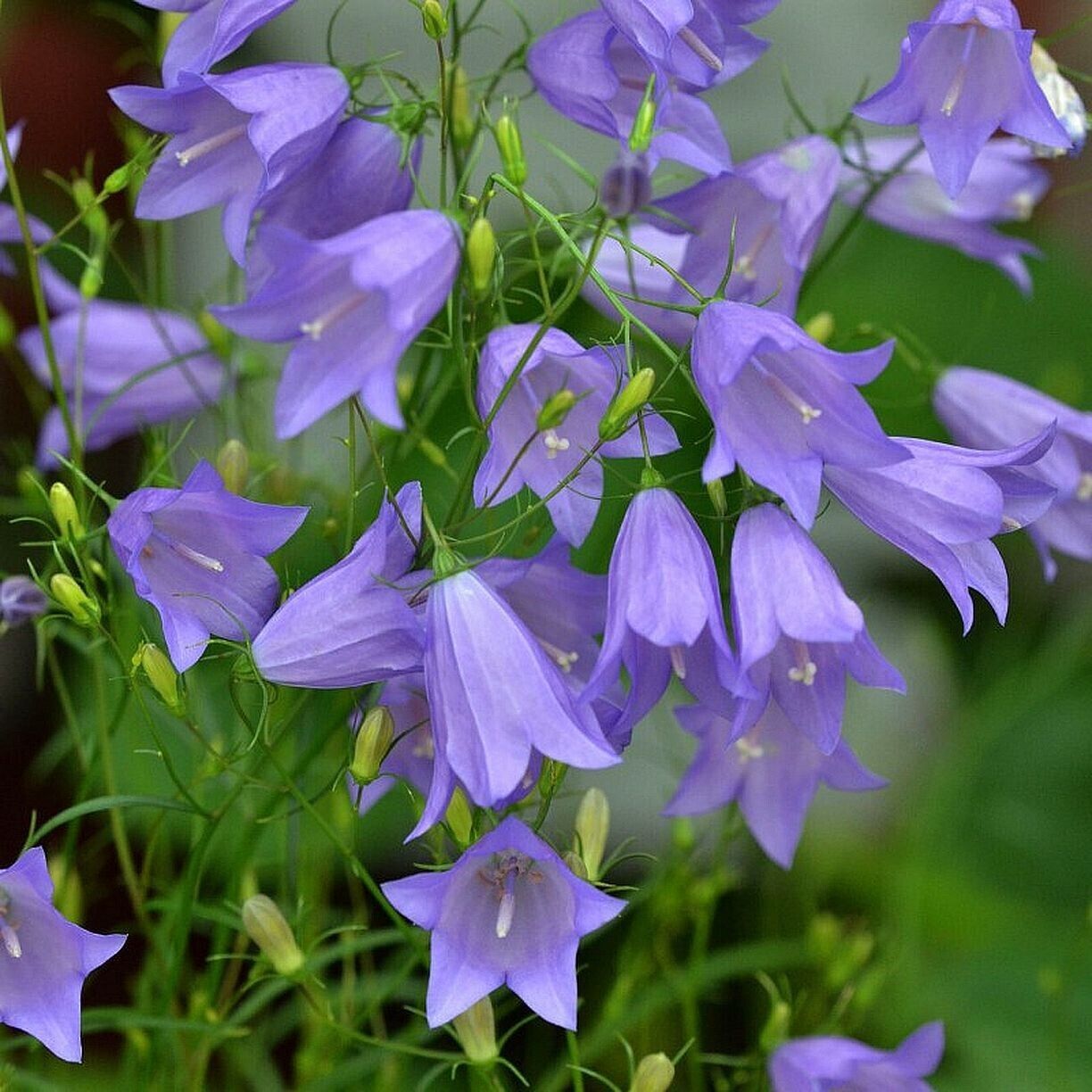
Another important meaning of the Bluebell is constancy. This flower is known for its ability to bloom year after year, even in harsh conditions. This quality has made it a symbol of perseverance and steadfastness. The Bluebell is often associated with enduring love and faithfulness, making it a popular choice for wedding bouquets and decorations. It is believed that if you give someone a Bluebell, you are promising them your unwavering love and devotion.
In addition to its symbolic meanings, the Bluebell also has a practical use. In traditional medicine, the Bluebell has been used to treat various ailments such as coughs, colds, and even heart problems. Its roots contain a compound called scilliroside, which has been found to have medicinal properties. This adds to the flower’s significance and makes it even more cherished by those who believe in its healing powers.
The Bluebell is a beautiful flower with a rich history and deep meanings. Its delicate appearance and soothing blue color make it a popular choice for gardens, weddings, and gifts. Whether you want to express your gratitude or show your constancy, the Bluebell is the perfect flower to convey your feelings. So next time you come across this lovely flower, remember its significance and appreciate its beauty.
Forget-Me-Not
The blue flower, specifically the forget-me-not, holds a special meaning that is often associated with true love and remembrance. This delicate flower has been used to symbolize various emotions and sentiments throughout history, but its most common association is with love and loyalty.
One of the main meanings behind the blue forget-me-not is true love. This flower is often given as a gift to express one’s deep and unwavering love for another person. It is believed that the forget-me-not represents the idea of never forgetting someone, even when they are far away or no longer in our lives. This makes it a perfect flower to give to a loved one, whether it be a romantic partner, family member, or friend, to show them how much they mean to you.
In addition to true love, the blue forget-me-not also symbolizes remembrance. This can refer to remembering a loved one who has passed away or simply cherishing memories of a special person or time in our lives. The forget-me-not serves as a reminder to always hold onto these memories and keep them close to our hearts. It is often seen as a way to honor and pay tribute to those we have lost, making it a meaningful flower to include in funeral arrangements or memorial services.

Another important meaning associated with the blue forget-me-not is faithfulness and loyalty. This flower is often given as a token of commitment and devotion, making it a popular choice for wedding bouquets and anniversary gifts. Its vibrant blue color is said to represent the steadfastness and trust that is essential in any strong relationship. By giving someone a forget-me-not, you are expressing your unwavering loyalty and dedication to them.
The blue forget-me-not is a powerful symbol of love, remembrance, and loyalty. Its delicate appearance and rich symbolism make it a popular choice for various occasions and celebrations. Whether given as a gift or used as a decorative element, this flower serves as a beautiful reminder of the strong bonds we share with our loved ones and the importance of cherishing those relationships.
Bachelor’s Button
The blue flower, specifically the Bachelor’s Button, holds a significant meaning in various cultures and traditions. It is often associated with themes of love, romance, and marriage. However, there are also deeper meanings attached to this beautiful flower, particularly when it comes to its symbolism in regards to single blessedness and celibacy.
Single blessedness refers to the state of being unmarried or not in a romantic relationship. In some cultures, this is seen as a positive and fulfilling way of life, where individuals can focus on their personal growth and pursue their passions without the responsibilities and commitments of marriage. The Bachelor’s Button, with its vibrant blue color, has come to represent this state of being.
The color blue has long been associated with feelings of calmness, serenity, and tranquility. It is also linked to the element of water, which symbolizes emotions and the flow of life. As such, the blue Bachelor’s Button is often seen as a representation of inner peace and contentment that can be found in the single life. Its delicate petals and simple yet elegant appearance further emphasize the beauty and joy that can be found in solitude.
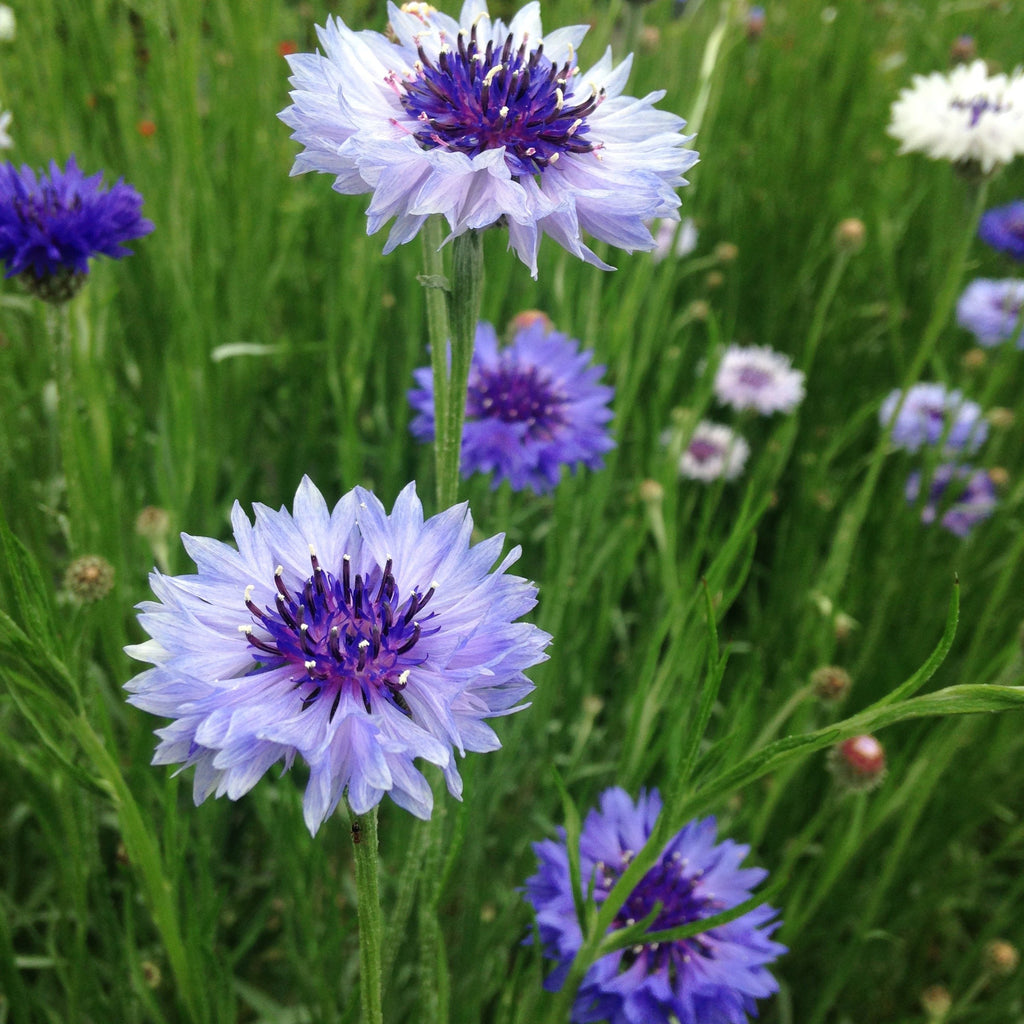
Moreover, the Bachelor’s Button is also associated with the concept of celibacy. This refers to the choice of abstaining from sexual relations and remaining unmarried for religious or personal reasons. In Christianity, the blue flower is often linked to the Virgin Mary, who is considered the epitome of purity and chastity. The Bachelor’s Button, with its pure blue color and lack of any other hues, is seen as a symbol of this virtue.
In addition to its association with celibacy, the Bachelor’s Button also represents commitment and dedication to a higher purpose. Just like how the flower remains steadfast in its blue color, despite changing environmental conditions, those who choose a life of celibacy are expected to remain true to their beliefs and values, regardless of external influences.
The blue Bachelor’s Button holds a deep and meaningful symbolism for those who embrace the single life or choose to remain celibate. It serves as a reminder to find joy and contentment in one’s own company and to stay committed to one’s beliefs and values. Its simple yet striking appearance makes it a perfect representation of the beauty and fulfillment that can be found in a life of single blessedness and celibacy.
Cornflower
The blue cornflower, also known as the Centaurea cyanus, is a beautiful and delicate flower that has been used in various cultures for centuries. It is native to Europe and Asia and has become a popular garden plant due to its vibrant blue color and delicate appearance.
One of the most common meanings associated with the blue cornflower is delicacy and refinement. This is due to its delicate petals and soft appearance, which gives off a sense of elegance and grace. In many cultures, the blue cornflower is seen as a symbol of femininity and beauty, making it a popular choice for bridal bouquets and other special occasions.
In addition to delicacy and refinement, the blue cornflower is also associated with wealth and prosperity. This is because the flower was once considered a weed in many parts of Europe, but it quickly became a valuable crop due to its use in herbal medicine and dye production. As a result, the blue cornflower became a symbol of abundance and good fortune, and it was often given as a gift to wish someone prosperity and success.
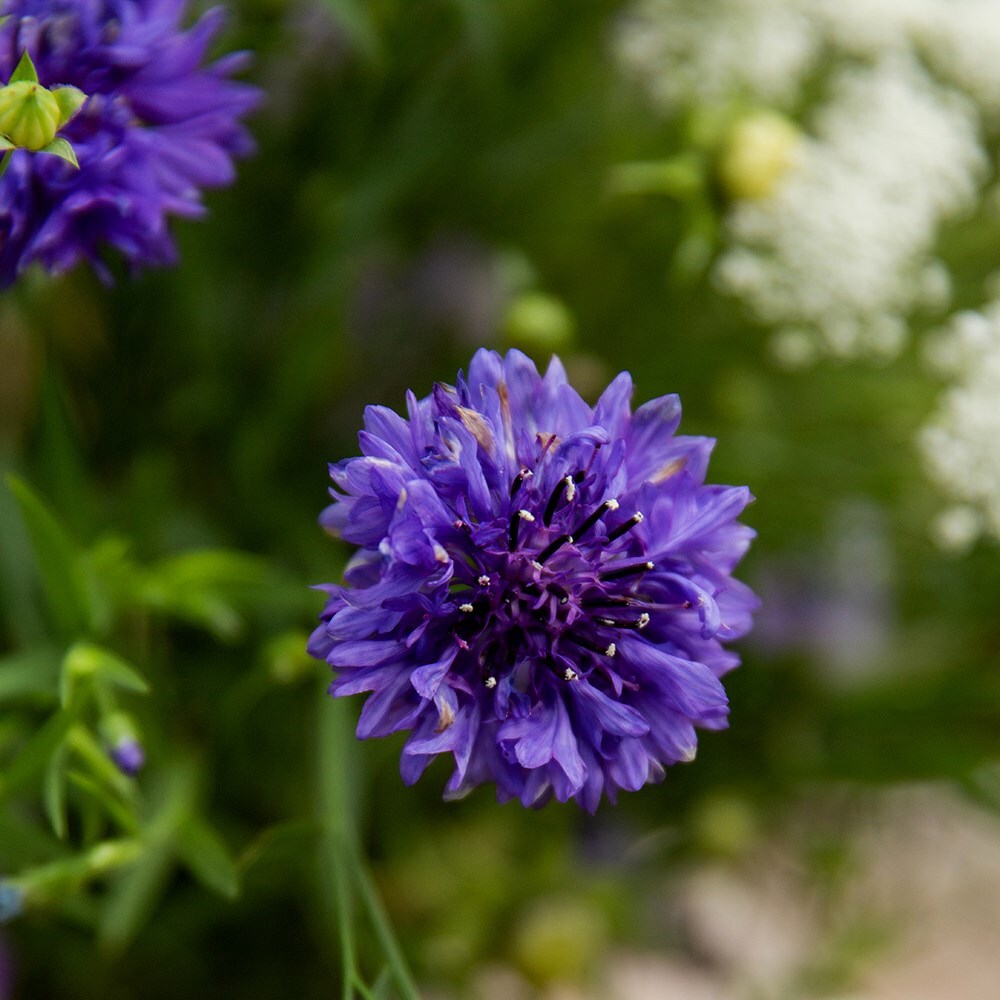
Furthermore, the blue cornflower is also linked to love and romance. In some cultures, it is believed that if a person wears a blue cornflower in their hair, they will attract love and happiness into their life. This is because the flower’s vibrant blue color is associated with loyalty, trust, and faithfulness, making it a perfect symbol for romantic relationships.
In addition to its cultural meanings, the blue cornflower also has a strong presence in literature and art. It has been featured in many famous paintings, poems, and songs, often representing themes of love, beauty, and prosperity. Its delicate appearance and vibrant blue color make it a popular subject for artists and writers alike.
The blue cornflower holds a deep and rich symbolism that has been passed down through generations. Its delicate beauty, association with wealth and prosperity, and connection to love and romance make it a popular choice for various occasions and celebrations. Whether you are giving someone a bouquet of blue cornflowers or simply admiring their beauty in a garden, this flower is sure to bring joy and meaning to those who encounter it.
Conclusion
Blue flowers hold deep symbolic meanings that have been passed down through generations. They are often associated with peace, serenity, trust, loyalty, spirituality, wisdom, healing, and protection. Whether you choose to incorporate them into your garden, home decor, or spiritual practices, blue flowers can add a touch of elegance and sophistication to any setting. So go ahead and embrace the beauty and symbolism of blue flowers in your life!

We’re Emma Carole Paradis and Kimberly Carole, the owners and designers of Impeccable Nest, based in Bedford, New Hampshire. A mother-daughter team with a love of design. Originally from Manhattan Beach, California, now based in Bedford, New Hampshire, we bring a Southern California cool and New England tradition to our design. Not only do we work together…we also live together in a multi-generational home…and a home that they are known to design for others.
